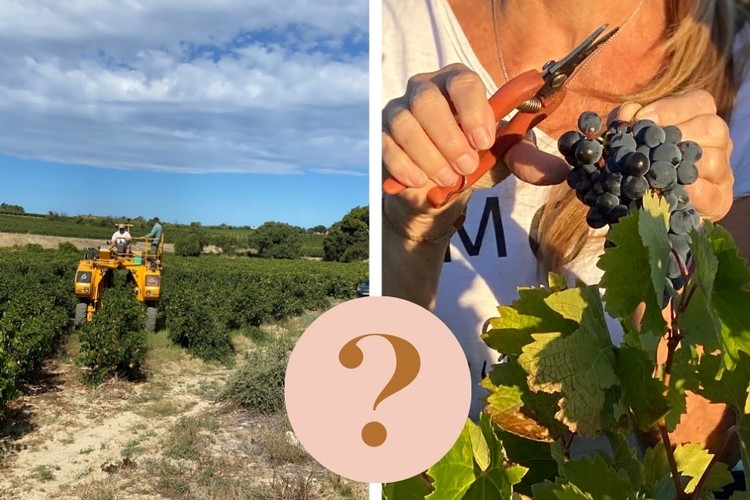Harvesting Perfection: 2,000 Years of Winemaking Tradition
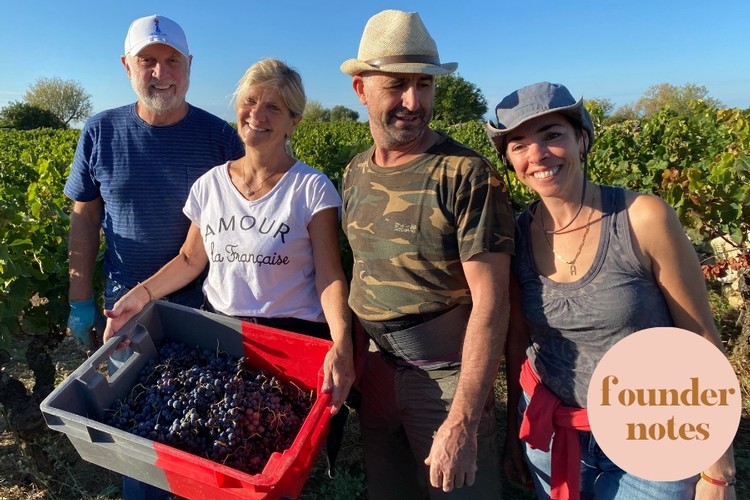
Hand-harvesting with Christine and Franck, owners of Domaine Avela and newest members of the Princess & Bear family
The golden days of early fall in the Languedoc-Roussillon herald the return of a 2,000-year-old winemaking tradition — the harvest of the grapes! It’s one of our favorite times of year. We stroll through the vineyards surrounding our village of Quarante, sampling different grape varieties right off the vine. And we never miss an opportunity to join in the harvesting fun.
Part of our mission is to support small family farms. Most of our winemakers average only 50 acres. When hand-harvesting, many of these farmers depend on family and friends to pitch in alongside a skilled crew of workers.
Hand-harvesting requires earlier risers. A typical day begins at 4am when the cooler air protects the grapes from premature oxidation. It also requires good knees! Low-hanging fruit calls for lots of squatting :)
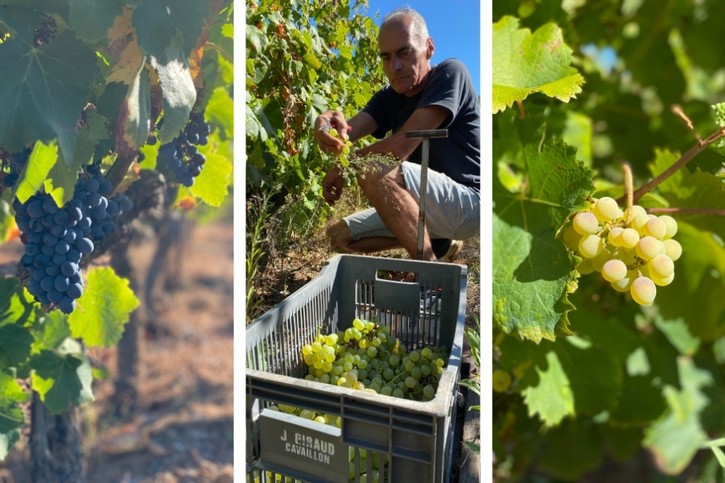
Harvest-ready red Carignan grapes and white Vermentino grapes
According to Camille Izarn, a young, rising star at Borie La Vitarele, for each grape and vineyard there exists a perfect day to harvest. Winemakers often rely on testing the sugars, but in her opinion the real harvesting magic comes from identifying that perfect day by taste alone. By walking the vineyards and continuously sampling the grapes, a winemaker can determine if the tannins in red grapes such as Carignan are well-developed (as they should be); and in white grapes, like Vermentino, whether the sugar level is low enough to retain acidity. When that perfect day arrives, the winemaker summons the troops and the harvest begins!
Most of our winemakers hand-harvest but some rely on machines to bring in the grapes. What’s the difference?
The main benefit of hand-harvesting is the gentleness of the process. Grape skins remain intact, preventing oxidation and premature fermentation. This added care is crucial. The moment a grape ruptures and releases juice, oxidation begins and the fresh fruit flavors degrade. Not even chemical additives can counter this (though none of our winemakers use additives).
Interestingly, the oldest vineyards must be hand-harvested. They were planted before modern tractors existed so the "horse-width" rows are too narrow for machine harvesting.
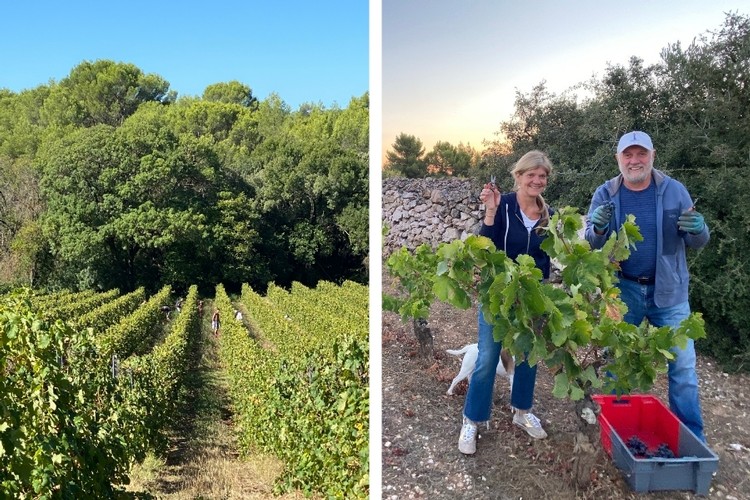
Left—Friends and family members join a crew from Spain who've been hand-harvesting for Borie la Vitarele for years. Right—Carol, Steve, and Gigi in the vines at sunrise.
And the benefits of machine-harvesting? Tractors save time and money, especailly for larger vineyards. But the process is rough. Grapes are scraped from the vine with silicone “fingers.” Even if the grapes survive this phase intact, there's the risk of being crushed in the storage vats beneath the weight of the rest of the grapes.

The key is to quickly transport the fruit from the field into tanks or the winepress. All of our winemakers farm their own vineyards with the caves close by. So the grapes are out of the vineyard and in the tank within the hour. The result — delicious, fresh wines with lovely fruit flavor.
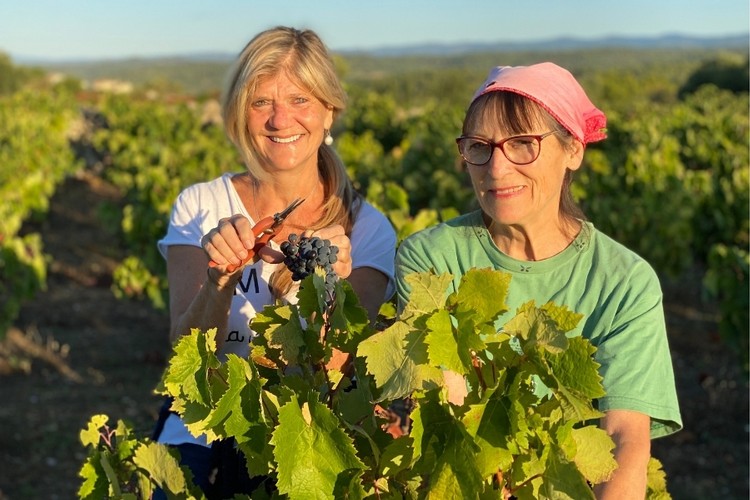
Carol hand-harvests for Domaine Avela alongside a fellow picker who says her family has lived in Quarante "forever."
Soon another harvest will be behind us and we’ll return to discovering the Languedoc wines you love. We promise to keep you posted on our winetasting adventures. In the meantime, check out our Fall Seasonal Picks. Reds, whites, and rosés to enjoy by the campfire or pair with changing Fall menus:

